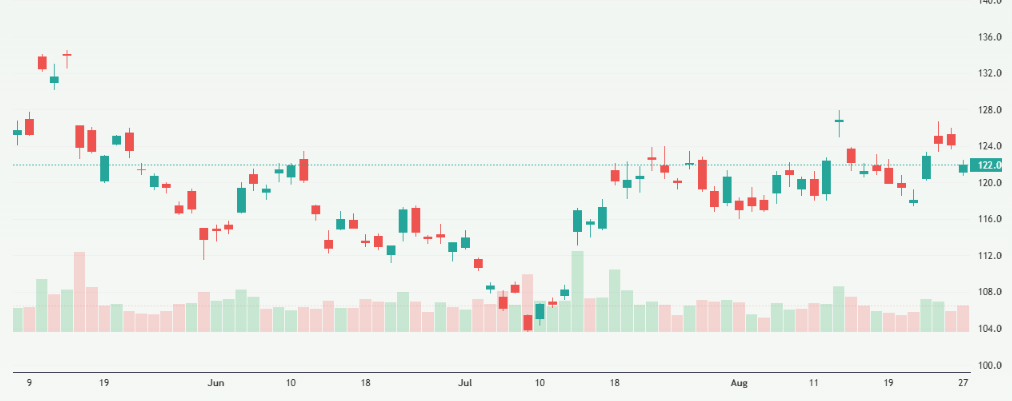Alibaba AI Revenue Rises While China Food War Hits Profit
The latest earnings report of Alibaba tells two very different stories. On one side, we see strong growth from its artificial intelligence and cloud services. On the other hand, profits are shrinking as China’s “food war” creates a storm of price cuts and heavy competition. This mix of progress and pressure makes Alibaba’s journey worth watching.
AI is becoming the company’s strongest engine. From e-commerce to logistics, new AI tools are helping Alibaba serve businesses and customers faster. We can already see AI shaping the way people shop, pay, and get deliveries in China. This is not just a trend. It is becoming a long-term pillar for Alibaba’s growth.
At the same time, the food delivery market is testing its limits. Players are fighting for market share with big discounts. Customers love the low prices, but companies are losing money in the process. For Alibaba’s Ele.me unit, the battle is eating away at margins.
We now face a question: can AI rise to balance the hit from the food war? This is the challenge Alibaba must solve, and it will decide how the company moves forward.
Alibaba’s AI Revenue Surge
Alibaba’s cloud and AI arm showed strong momentum this quarter. Cloud revenue grew about 26% year-on-year and beat expectations. AI product sales within the cloud rose at triple-digit rates for several consecutive quarters. New AI tools now power search, recommendations, and logistics. The company also highlighted rising demand from enterprise customers for generative AI and model hosting. Investors see this as a clear sign that Alibaba is shifting from pure e-commerce to a tech platform with deep AI capabilities. Analysts note the cloud business is becoming a main profit driver as on-demand AI services scale.
Beyond software, Alibaba is investing in hardware and chips. The firm announced work on custom AI chips to reduce reliance on foreign suppliers. This move follows limits on some foreign GPUs and aims to cut costs and boost performance for Chinese datacenters. Such bets show Alibaba’s desire to control more of the AI stack.
China’s Food War: The Profit Squeeze
The food delivery market in China is now brutal. Major players keep cutting prices to win customers. The result is higher volume but far lower margins. Ele.me and other local services face heavy subsidy spending. The so-called food war has eroded profits across the sector. Even Meituan, a market leader, reported dramatic profit declines. Such pressure drags down Alibaba’s local services unit and reduces group profitability. Consumers may enjoy cheap meals now, but the companies are paying the cost.
Instant retail and on-demand services add to the strain. Alibaba invested heavily in faster delivery and instant commerce. Those investments increase operating expenses. Combined with subsidy battles, the result is squeezed operating income for local businesses. Analysts warn this will keep margins weak until competition eases.
Financial Performance Breakdown
Total group revenue rose slightly. Revenue for the quarter reached about 247.7 billion yuan, a small increase but below some forecasts. Net income figures were mixed, helped by gains from equity sales and investments. Cloud revenue was a highlight, rising sharply and improving operating profit within that segment. China’s e-commerce revenue grew, but operating income for consumer units fell. International commerce showed solid gains but remains a smaller part of total sales. Free cash flow dipped due to infrastructure and instant commerce spending.
Segment details matter. Cloud and AI showed strong margin improvement in parts. E-commerce kept scaling but faced weak consumer demand and higher marketing costs. Local services, including Ele.me, reported margin pressure from subsidies. Logistics and international retail recorded healthy growth but could not fully offset the drag from on-demand services. Analysts point to a short-term mix problem: high-growth but still low-margin segments pushing down group profits.
Strategic Shifts & Management Response
Alibaba is shifting focus toward higher-value AI products. The company is bundling AI features into cloud offerings and enterprise tools. Management is also trimming lower-return projects. Capital will go to cloud infrastructure, AI research, and international expansion. On food delivery, Alibaba signaled a pullback from aggressive subsidy tactics. The firm plans to test premium services and improve unit economics for local delivery. Leadership is also exploring partnerships and asset sales to free cash. These moves aim to balance growth and profit.
Long-term, Alibaba considers an IPO for its cloud unit. That plan would push cloud to the center stage and attract outside valuation for AI assets. The cloud spin or listing could pressure the company to show clearer paths to profit for that segment. Meanwhile, building an in-house chip shows a strategy to protect AI growth from supply shocks.
Investor Reaction & Market Outlook
Markets reacted positively to the cloud results but nervously to the profit squeeze. Shares rose after the report, driven by hopes for AI monetization and long-term margins. Short-term traders remain wary because of the food delivery losses and heavy instant retail spending. Analysts have split views. Some say AI and cloud can offset near-term pain and restore earnings growth. Others warn the subsidy war could keep margins depressed for several quarters. Outlooks now hinge on how fast AI revenue scales and whether local services cut costly subsidies.

For the next quarters, watch three things: cloud revenue growth, Ele.me’s margin trend, and any major restructuring moves. Singles’ Day later this year will also test consumer demand and ad revenues. If the cloud keeps growing rapidly, investors may overlook temporary weakness in local services. If not, stock volatility could continue.
Global Implications
Alibaba’s rise in AI matters beyond China. Strong AI offerings increase competition with Amazon and Microsoft in cloud services. If Alibaba’s chips and AI tools scale, global customers in Asia, Africa, and the Middle East may gain a compelling alternative. This could shift market shares in public cloud and AI hosting. At the same time, trade limits and geopolitics mean Alibaba must balance global ambition with local supply chains and regulation. The company’s moves may accelerate a larger trend: more regional cloud players building independent AI stacks.
Final Words
The quarter shows two clear forces. AI and cloud are the growth story. Food delivery and instant retail are the profit problem. Alibaba sits at a turning point. Strong AI revenue provides hope for higher margins later. The subsidy battle in food delivery will keep near-term pressure on profits. The outcome will depend on execution: convert AI strength into steady earnings while calming the price war in local services. Investors and rivals alike will watch the next few quarters closely.
Disclaimer:
This is for informational purposes only and does not constitute financial advice. Always do your research.






